Buzz Blog
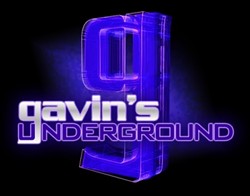
As
we continue into the digital era and different forms of media and
entertainment meet new challenges, some are facing the reality that
they may not be around in a decade or two. Television being one
of the mediums that seems on the verge of moving away from
traditional broadcast and into some sort of mixed-media internet
stream with Apple and Google heading up the slow paced charge. But
before the inevitable comes in whatever form it takes, some are
already moving forward in their own way to show what could
be.

--- Earlier this summer the web-based Utah station called Salt
TV Network made its debut to the public with a soft launch of their
website. Featuring several former anchors from 2News, KSL and 4Utah,
who over the past few years were either forced into retirement or
laid off due to cutbacks or just outright fired. Now with the help of
private investors and other ex-employees who specialized in
behind-the-scenes work, the group of experienced journalists and
commentators look to change the way Utah gets its news and
information. We got a chance to chat with one of the minds behind the
new network, producer Patrick Benedict (as seen below in his prior producing years), about his own career and
starting up the network, plus his thoughts on local broadcasting and
digital media today.
Patrick
Benedict
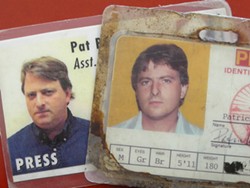
http://salttvnet.com/
Gavin:
Hey Patrick, Tell us a bit about yourself.
Patrick:
I was born and raised in L.A. (Lower Akron) and came of age in the
60’s and 70’s, the son of a blue-collar veterinarian and WWII
army captain. I didn’t actually grow up, however, until I had a
daughter at the age of 43.
Gavin:
How did you first take an interest in broadcasting, and what really
influenced you growing up?
Patrick:
I was lucky enough to be raised in a family of news fanatics. Two
newspapers came to the house every day, The Akron Beacon Journal
and The Cleveland Plain Dealer, both venerated rags, which we
read cover to cover and then used to line the bottom of the animal
cages at Dad’s vet clinic. My Dad and older brother were also into
photography and 8mm home movies. In fact, if we had lived in Dallas
in 1963, Dad would’ve likely been then guy who shot the Zapruder
film. These two influences (and the advent of the Kodak Super 8mm
Ektasound Home Movie System) cinched my love of news. A high school
trip to D.C. cemented it all when I filmed newsman Daniel Schorr
outside the Senate on the very day he’d been whacked by CBS for
leaking a secret report on the CIA to The Village Voice. He
appeared none too happy. I also shot footage of Hubert Humphrey that
day. He was Lyndon Johnson’s VP and the guy Nixon beat to win the
White House in 1968. Coming from a strict, Woody Hayes Republican
household taking his picture was akin to getting shots of Ho Chi Min.
Even the old man was impressed.
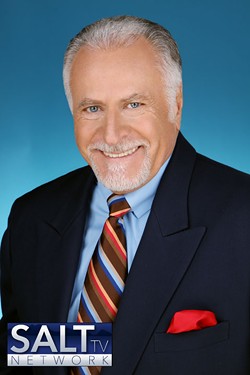
Gavin:
Did you seek out any college for it or did you just jump right in
from the start?
Patrick:
I went to Ohio State University and took the ten-year crash
course in photography and cinema. Probably would’ve been out a year
or two sooner, but portable video systems came along and of course I
had to check those out thoroughly. Thank God the old man kept
writing those tuition checks. Like he used to say, “There’s gold
in them thar poodles.” At the same time Ohio State backed the
production of a documentary I wrote during my third senior year and
that’s where I earned my chops as a street shooter. The production
focused on the gentrification of an old urban neighborhood in
downtown Columbus and so I spent a couple of years hanging in the
hood getting to know the characters and telling their stories. I sort
of became a fixture there and after a while these amazingly colorful
people opened up and let me into their lives. I shot a zillion hours
of tape, interviewing cops, hookers, junkies, artists, social
workers, storefront owners, boozers and the most unsavory of all,
would-be art gallery owners. I had this amazing perch above an old
burlesque house overlooking the city’s main drag. Amazingly enough,
the finished piece took top honors at a couple of renowned film
festivals and that was my ultimate gateway into TV news.

Gavin:
What was it like for you learning the ropes of the business and
putting together shows?
Patrick:
My great big success as a great big important documentary filmmaker
landed me a gig as a master control operator at a start-up TV station
south of Cleveland. I ran commercials and old movies in the middle of
the night for $5.15 an hour. After a while they decided they wanted
to do local news headlines and since I owned my own camera gear they
made me news director. They might as well have crowned me the head of
CBS News. It was an absolutely great experience. I was a one-man
band. I shot everything that moved, from politicians to high school
football. I ultimately convinced combat engineers from the Ohio
National Guard into taking me with them on a "nation building
exercise" to the lovely border region of El Salvador, Nicaragua and
Honduras. What they were really doing was building a forward
operating base for the planned invasion of Nicaragua. It was the time
of rebels and right wing death squads and the first and only time I
was in an environment where shoot to kill orders were issued in the
event we were messed with. I was only there for a matter of days and
twenty years later it makes my palms sweat. I came home with a sack
full of tapes only to learn the station had declared bankruptcy while
I was gone and was bolting the doors. It was my first lesson in the
frailty of local news. Those tapes, however, landed me another gig at
a real Cleveland news station. I was hired as freelance news shooter
and once again got to spend time shooting video in a deranged urban
environment. As fate would have it, a huge story broke while I was
there, the Jeffrey Dahmer murders out of Milwaukee. Turns out Dahmer was from Akron and his first victim was my former next-door neighbor
and backyard playmate, Steven Hicks. Steve disappeared a decade
before and we all thought he’d runaway from home. Turns out Dahmer
had confessed to the killing and since I knew the background I turned
a ton of material in the role of field producer. A lot of it went
national. After that, I was given a job as weekend line producer and
that’s where I learned to craft a whole bunch of stories at once in
the context of an entire news day.
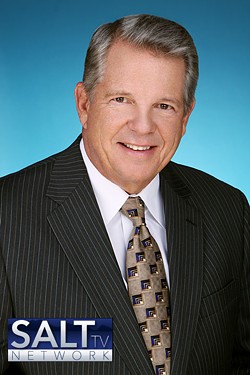

Gavin:
How did the opportunity come about to work for KUTV and
KTVX?
Patrick:
I was working for NBC in Columbus, Ohio, my old stomping grounds,
when I got a call from KUTV. They were looking for a hard-nosed
line-producer for the 10PM newscast with Michelle King and Terry
Wood. They flew me out and took me straight to Snowbird to discuss a
potential contract offer. After spending years in gritty urban
environments I took one look at the mountains and said where do I
sign. That gig lasted eight years. After a management change in late
2001 I moved to KTVX just as Ruth Todd was coming on board from KSL.
Both parties were great while they lasted.
Gavin:
What was your time like at both stations, and what stories were you
most proud to work on?
Patrick:
I had a great run at both stations. They’re both packed with
smart, passionate people. That passion came make for interesting
times, especially when you’re in the position of directing fire in
charged competitive environments. It simply comes with the turf.
While I was at KUTV I’d say the story I was most proud of was the
station’s coverage of the Salt Lake tornado in 1999. It started
with Sterling Poulson’s live eyewitness play-by-play of the roof
being ripped off the Delta Center. Instead of diving for cover he
called the story in as the debris flew passed his head. What guts. I
can still hear him yelling, “I can’t breathe!” as his phone
went dead. That kicked off about 12 straight hours of live coverage
and the 10PM news that night received an Emmy nomination for Best
Newscast. I’m also extremely proud of what reporter Andrew Stack
pulled off for KTVX while reporting from Iraq. He was the only Salt
Lake TV reporter to make the trip and he was there for months as a
one-man band. He was definitely in harm’s way more than once
turning stories with a small digital video camera before editing them
on his laptop and beaming them home over Internet. He returned to
Iraq three times for KTVX and earned couple of Emmys along the way.
I’m also still in awe of how KTVX’s team responded to the Crandall
Canyon tragedy. It was a great team performance that lasted 24 hours
a day for four weeks. Terry Wood and cameraman Todd Peterson literally
risked their lives videotaping deep inside the mine during the active
rescue. The spot where they were standing collapsed a few days later
killing the would-be rescuers. Our Trolley Square coverage also
sticks out as something I’m proud of, although the story haunts me.
Once again, Terry Wood led the charge and won another Emmy in the
process. His decision to take an editorial stand against the Divine
Strake weapons test along with Governor Huntsman was another proud
moment, although it likely cost Terry his job.

Gavin:
When did you end up going to work for Digital Bytes, and tell us a
bit about the work they do?
Patrick:
Pound-for-pound Digital Bytes is one of the best production
companies in the U.S. My first association with them was nearly ten
years ago when I had the opportunity to do some work with Rodney
Dangerfield at The MGM Grand in Las Vegas. Rodney asked us to tape
his act, something he’d rarely done. Digital Bytes loaned me the
equipment to make it happen. Fast forward to 2009, when I approached
Digital Bytes again to help me build the Salt TV Network site. At the
same time I began working freelance for them on a variety of
independent video projects. They’re truly some of the most talented
and laid back production people you’ll ever meet.
Gavin:
How did the idea come about for the Salt TV Network?
Patrick:
There are a couple of factors that led me to the Salt TV concept.
First, is the growing prominence of the web as a bona-fide
transmission vehicle for story aggregation and streaming video.
Second, was the sudden availability of some the most recognized names
in Utah news, people who are known, liked and missed by the public.
Third, was the growing dissatisfaction with the run of the mill
consultant-driven newscasts provided by out-of-state organizations
owned by heavily leveraged private equity firms.
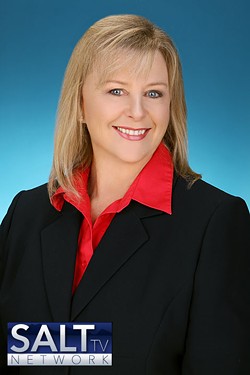
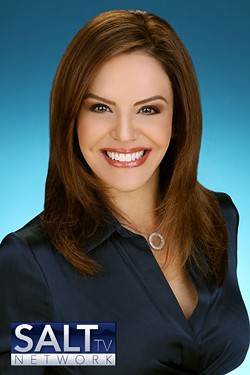
Gavin:
Was there any hesitation over doing it only online, especially with
broadcasting not having made the full leap to Internet broadcasting?
Or did you view it more as a unique prospect?
Patrick:
There was no hesitation at all in going on-line with this unique
product. The web is the way. It’s our bread and butter. It’s
offers our experienced team a chance to tell in-depth stories that
are important to Utah while freeing them from the 1:30 package
lengths you normally see on local TV newscasts.
Gavin:
What was the process like getting the reporting team together, and
how did you manage to amass such a large pool of talent?
Patrick:
The absolute best part of this whole process has been putting the
team together. It’s been a riot. I’d been it touch with most all of
these folks in one capacity or another through the years. Getting
them together was as easy as picking up the phone. We met piece meal
at first and were determined not to make the mistakes of the old
brick and mortar world. Rather than renting high-end office space we
met in public venues. We dubbed the Ritz Bowling Alley on State
Street as Salt TV World Headquarters and held a lot of our early
meetings there. (Not only can you get a cold beer, they also make a
damn fine Angus burger.) After folks signed onto the project we held
a full-blown photo shoot with our partners from SMG Studios on the
roof of the American Towers Building. We lined folks up against the
backdrop of the mountains and it took about .0005 seconds to
determine the viability of the team. A national media blogger
referred to the vision, which now adorns the top of the Salt TV
site’s masthead, as the Mt. Rushmore effect. Take a look and
you’ll see what he means.

Patrick: That direction, by the way, runs
contrary to what broadcast consultants are shoveling nationwide.
There’s a conscious attempt to minimize personality players under
the mantra that content is king. The only problem is in that in the
current cost cutting environment locally generated content is taking
a backseat like never before. That’s why you see the same old
stories repeated on six different newscasts and then see them
distilled as afterthoughts on the stations’ websites. When an
out-of-state consultant says content is king, he’s most likely
currying favor with out-of-state owners who are signing his check. In
short, the mantra “content is king” is code for “we don’t
want to pay top talent anymore.” Consequently, the airwaves are
suddenly full of youngsters who really can’t tell you what the
S.E.C. does or why the Nuclear Regulatory Commission might be
important. They’re too busy covering car wrecks, trying to
pronounce Tooele and working on their escape tapes.
Gavin:
What's the general feeling been like from everyone, especially
considering most of them used to be competitors?
Patrick:
These folks may have been competitors, but they’re also colleagues
and friends. There’s a genuinely warm feeling among all the
players. They share a special bond and they’re anxious to be part
of this next big thing. By the way, not everybody in the organization
has been on-air for 43 years. We have a nice pool of whipper-snappers
who are shoring up the ranks.
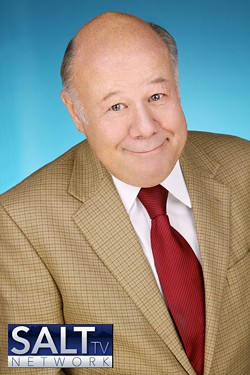
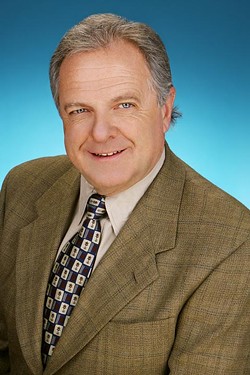
Gavin:
What was it like picking out the first few stories and putting them
together as a team?
Patrick:
Our basic marching orders are to tell good, in-depth stories that
are important to Utahns. These longer form pieces we’ve posted on
the beta site have attracted thousands and thousands of viewers.
There’s a definite appetite for these types of stories and it
speaks directly to the depth and experience of the Salt TV
talent.
Gavin:
A couple months ago you did a soft-launch of the site with a couple
of stories on it. What was the public reaction to it at that
time?
Patrick:
The response has been terrific. It’s far exceeded our
expectations. We’ve been deluged by well-wishers and we get the
real sense that people are pulling for us.
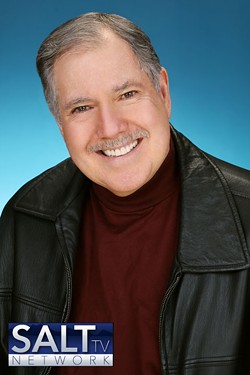
Gavin:
When do you plan to fully launch everything and have content coming
out on a regular basis?
Patrick:
We’re getting there. The Tribune article outed us a little early,
but we we’re glad for the story and the positive vibe. Suffice to
say you’ll soon be seeing fresh local content from across the state
every single day.
Gavin:
What is the overall goal of the network and what do you intend to
bring to local broadcasting?
Patrick:
Our goal is to deliver the in-depth new stories Utahns value most,
stories that impact their lives and their families, now and in the
future.

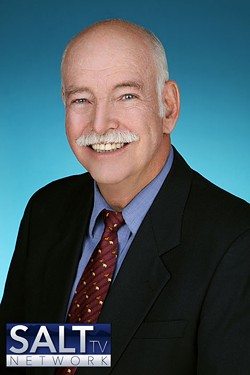
Gavin:
Going a bit local, what's your take on our television market, both
good and bad?
Patrick:
Overall, Utah’s pretty lucky. The local TV news product over the
years has been pretty good. Not many markets can say that. I think
that excellence was fostered in part through local ownership, whether
it was through folks like George Hatch and his family who ran KUTV
and put journalism first, or KSL who’s home ownership was also
committed to journalistic excellence. However, the money pressures today are making for tough times in local TV newsrooms. But I’m
also here to tell you that the people who are still grinding it out
are a hard working lot regardless of their ownership or the
consultant mandates du jour. These are some fine folks who tow the
line every single day and it’s a shame to see what they’re going
through. I hope they persevere. Like Winston Churchill used to say,
“When you’re going through hell, keep going.“
Gavin:
Is there anything you believe could be done to make it bigger or
better?
Patrick:
Commit to longer form and more in depth storytelling. Enterprise
stories. At many stations these days, if the news doesn’t come over
a police scanner or isn’t faxed in a press release it may not get
covered. Lowering the expected return rate on the almighty dollar
might help a bit. Actually making a commitment to the community you
serve versus the investors of the private equity firm who just
happens to own you today. That might be a good start.
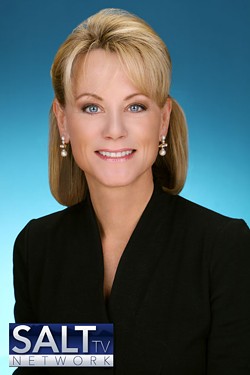
Gavin:
What are your thoughts on the downswing television has taken in this
economy and what stations are doing to try to bring themselves
back?
Patrick:
My biggest concern is the trend toward sponsored product placement
in and around newscasts, using bona-fide news people to suddenly
shill fad diets or the latest tummy wraps, while pretending its
purely entertainment.
Gavin:
What's your opinion on Internet-based broadcasting like Netflix,
Apple TV and the coming Google TV; and how that is impacting the
broadcast landscape today?
Patrick:
We live in an ala-carte on-demand world. The Internet speaks to the
heart of that. Internet-ready TV is already here. The delivery
systems are becoming more and more user friendly. Soon dialing up a
website on your TV to deliver your favorite movie or time slipped TV
show will be routine. We won’t remember a time when it wasn’t
that way. Broadcasters that don’t grasp that will ultimately fade
away. As another old newsie used to tell me, “The guys that built
the last buggy whip holders probably made the best damned buggy whip
holders you’ve ever seen. Too bad some jerk came along and invented
the automobile.”
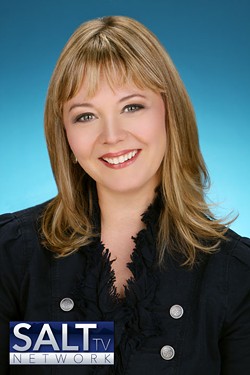
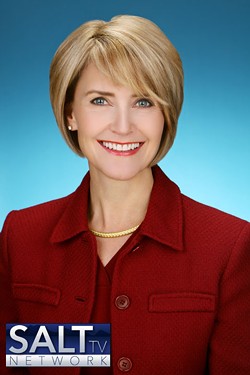
Gavin:
Where do you believe television and the Internet will be as a pair
in the next five years?
Patrick:
I think they’ll largely be as one, maybe not in five years, but in
ten for sure.
Gavin:
What can we expect from you and Salt TV over the rest of the
year?
Patrick:
A whole new approach to local news delivery, one that serves the
Utah audience’s highest interest by presenting the stories that
people are thirsting for, stories about health, the environment,
education and politics. Stories that stress substance over
hype.

Gavin:
Aside the obvious, is there anything you'd like to promote or
plug?
Patrick:
I’d like to thank the team at Digital Bytes for their fine work
this last year. The same is true for photographer Marc Reynolds and
his fine team at SMG Studios. I’d also like to thank Lynn Peterson
and Shauna Scott, Executive Producers for "Profiles In Caring"
for all they’ve done in getting Salt TV down the road. Also, we’re
thinking about marketing a greatest hits reel featuring the best work
of all our correspondents over the course of their careers. Dick
Nourse’s interview with Hannibal on the eve of his drive through
the Alps is spellbinding. Terry Wood has a great piece he did with
Davy Crockett right before Davy ran for Congress in Tennessee.
Randall Carlisle and Tom Barberi also have a piece talking about
their early days in news and how excited they were when they quit
writing news stories on wax and went to papyrus. Exciting times,
indeed!
| Follow Gavin's Underground: |
|
|
|